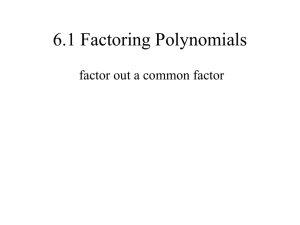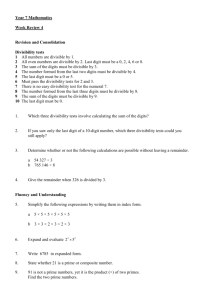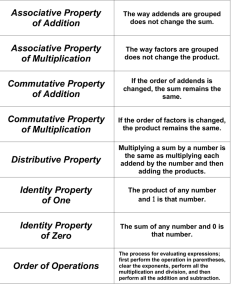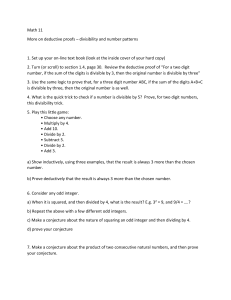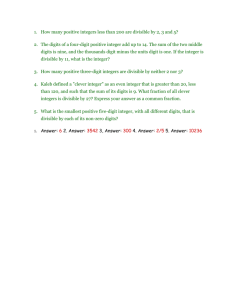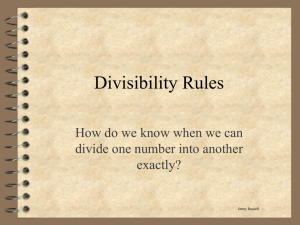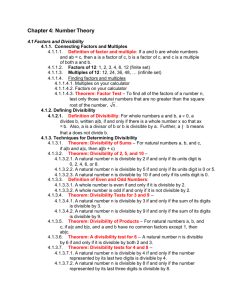Classroom “RULES” Chart – recording of students generalizing of
advertisement
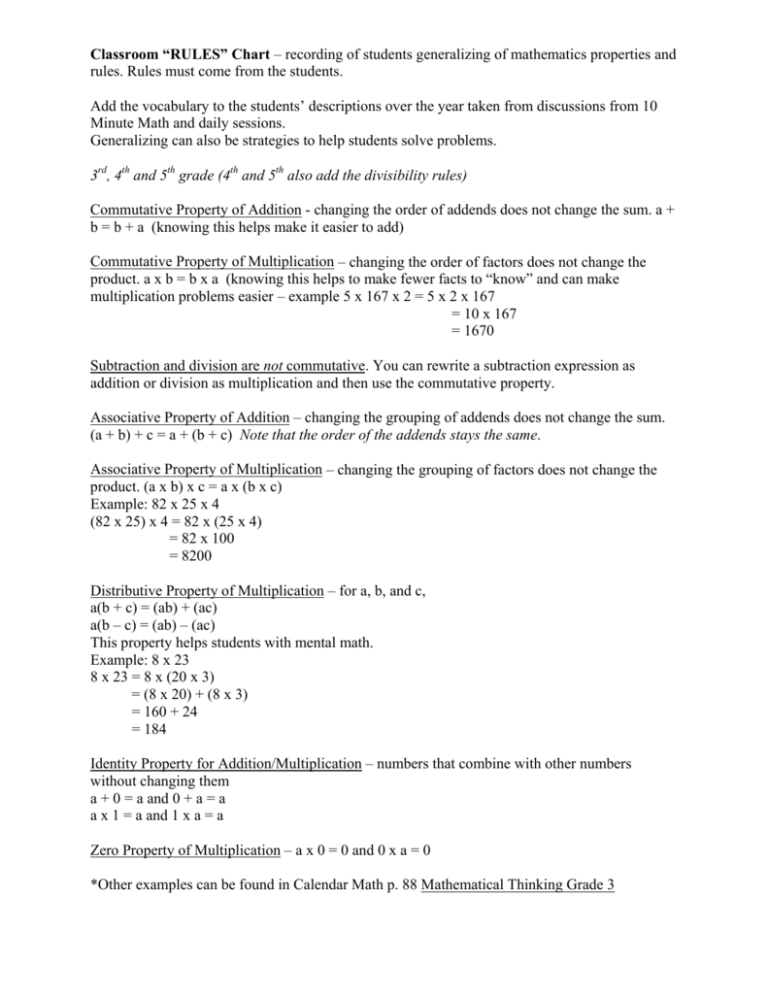
Classroom “RULES” Chart – recording of students generalizing of mathematics properties and rules. Rules must come from the students. Add the vocabulary to the students’ descriptions over the year taken from discussions from 10 Minute Math and daily sessions. Generalizing can also be strategies to help students solve problems. 3rd, 4th and 5th grade (4th and 5th also add the divisibility rules) Commutative Property of Addition - changing the order of addends does not change the sum. a + b = b + a (knowing this helps make it easier to add) Commutative Property of Multiplication – changing the order of factors does not change the product. a x b = b x a (knowing this helps to make fewer facts to “know” and can make multiplication problems easier – example 5 x 167 x 2 = 5 x 2 x 167 = 10 x 167 = 1670 Subtraction and division are not commutative. You can rewrite a subtraction expression as addition or division as multiplication and then use the commutative property. Associative Property of Addition – changing the grouping of addends does not change the sum. (a + b) + c = a + (b + c) Note that the order of the addends stays the same. Associative Property of Multiplication – changing the grouping of factors does not change the product. (a x b) x c = a x (b x c) Example: 82 x 25 x 4 (82 x 25) x 4 = 82 x (25 x 4) = 82 x 100 = 8200 Distributive Property of Multiplication – for a, b, and c, a(b + c) = (ab) + (ac) a(b – c) = (ab) – (ac) This property helps students with mental math. Example: 8 x 23 8 x 23 = 8 x (20 x 3) = (8 x 20) + (8 x 3) = 160 + 24 = 184 Identity Property for Addition/Multiplication – numbers that combine with other numbers without changing them a + 0 = a and 0 + a = a a x 1 = a and 1 x a = a Zero Property of Multiplication – a x 0 = 0 and 0 x a = 0 *Other examples can be found in Calendar Math p. 88 Mathematical Thinking Grade 3 Divisibility Rules – one whole number is divisible by another whole number if the remainder is zero when you divide. Patterns can make it easier to tell if one number is divisible by another. Patterns should be discovered over the year by the students. A number is divisible by: 2 3 4 5 6 9 10 If: The ones digit is 0, 2, 4, 6, or 8 (or it is an even number The sum of the digits is divisible by 3 The number formed by the last two digits is divisible by 4 The last digit is 0 or 5 The number is divisible by 2 and by 3 The sum of the digits is divisible by 9 The final digit is 0 *Can be found in Arrays and Shares grade 4- extension How can divisibility rules help you? 1. They can help you determine the factors of numbers. Example: The number 360 ends in 0, the sum of its digits is 9, and the number formed by the last two digits is 60. The divisibility rules tell you that 2, 3, 4, 5, 6, 9, and 10 are some of the factors of 360. 2. They can help you decide whether a bunch of things can be put into equal groups. Example: There will be 138 people at a party. Can the host fill tables of 5? No, 138 is not divisible by 5. Can the host fill tables of 6? Yes, 138 is divisible by 6.


